Protecting Plants in Winter Conditions
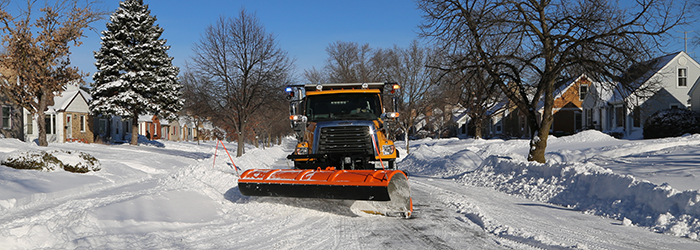

The winter months are hard on all of us, including our plants. Cold temperatures, frost, and dry air pose an ongoing threat to the health of shrubs and trees. Often negatively impacting their ability to thrive when spring rolls back around. However, proper care and attention can ensure you are protecting your plants in winter.
In this guide to winter tree and plant care, we will examine the potential causes of tree damage. Next, we will outline steps for protection, including pruning, tree guarding, and more.
Understanding The Damage in the Winter Months
Before we explore the ins and outs of protection for plants, let’s understand how different factors affect plants in winter. Plants without adequate preparation to withstand cold temperatures may experience dehydration or frost damage drastically impacting their health. Additionally, severe winter storms may cause further damage from heavy snowfall or the formulation of ice on branches.
In the midst of the cold season, plant owners should be aware of the negative impact salt and ice melt can have on their plants. These substances enter the soil around trees and shrubs, eventually absorbing into the roots and spreading throughout the plant.
Overall, the high amounts of sodium chloride from salt melts impact the health of the root system. You may notice a significant decline in the health of foliage by the end of winter or early spring. The damage leading to death in some cases.
Planting and Pruning
Deciduous trees and shrubs are particularly susceptible to damage caused by ice and heavy snow. These freezing temperatures can lead to branch breakage that may leave plants more vulnerable to disease or pests in the spring.
Professionals recommend not removing snow from branches yourself, you’ll likely further the damage to trees. Instead, plan out where you plant ahead of time. Plant trees and shrubs in an area that is not too close to structures or roadways. This prevents extra snow and ice from being shoveled onto the branches.
Gardeners should aim to avoid planting near pathways and roadways where salted throughout the winter. As previously mentioned, salt causes permanent damage to trees and shrubs when absorbed through the roots. Take action against this damage by separating plants from pathways using barriers and improving drainage with the addition of charcoal in the soil. Another alternative may be to replace traditional ice-melters like sodium with sand, sawdust, or kitty litter.
Pruning is another important aspect of your winter tree care regimen. For many types of plants, the dormancy period that lasts from December to February is a great time for pruning. Waiting until this period to prune prevents interruption of the essential hardening process preparing plants to endure winter weather.
Removing dead branches stifles the spread of disease caused by organisms that are inactive during winter. Just be careful not to prune any spring-flowering plants during the height of their growing season.
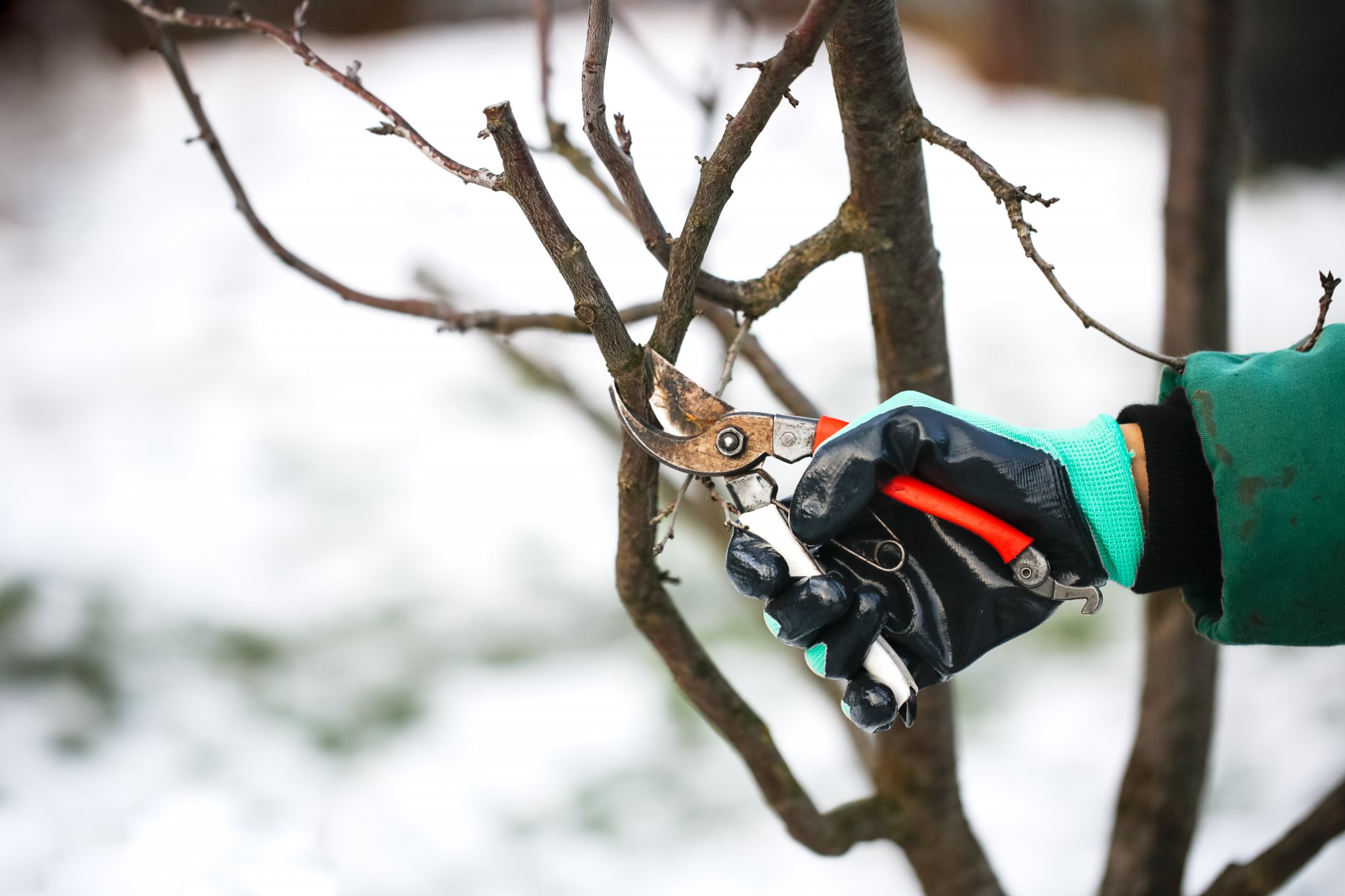

Preventing Winter Desiccation
If you notice browning needles on your evergreen trees, it may be a result of desiccation. Desiccation occurs when winds dry out a plant’s leaves faster than it can absorb water from the soil. Even though trees and plants are technically dormant during this time, a healthy tree still needs access to a steady supply of water. This maintains the correct moisture levels and prevent life-threatening dehydration.
Frozen ground and harsh, drying winds make winter a risky season for plants, especially broadleaf evergreens like holly and rhododendron. These plants commonly lack soil moisture in their root zone during the winter season.
Several methods can combat desiccation in all your winter plants, not just the evergreens. If you can, try applying a layer of mulch on the ground around the plant bed after the ground has frozen. This layer should act as insulation that helps the soil retain moisture and prevents excessive freezing and thawing that could lead to root damage. Do not place excess mulch too close to stems, as it may suffocate the roots as well as build up moisture leading to rot.
Another way to prevent winter desiccation is to use anti-desiccation sprays. These products apply a protective film to leaves, thus reducing water loss. Young trees and shrubs will also benefit from a healthy drink of water during warm, dry winter weather.
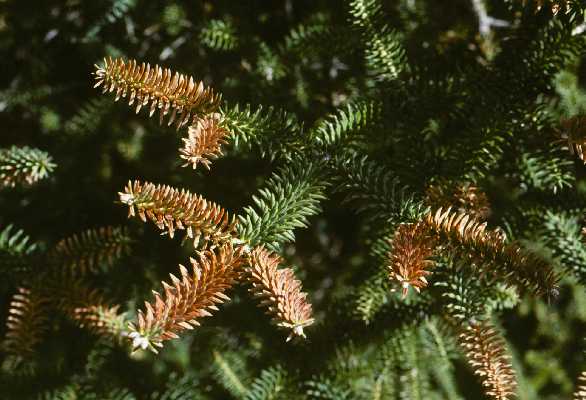

Tree Wraps
Fluctuating winter temperatures are a major problem for thin-barked trees. These drastic changes in temperature bring about two main types of tree damage: frost cracks and sunscalds. Frost cracks occur when the temperature fluctuates dramatically, causing the bark to split. Sunscald, on the other hand, happens when the winter sun heats the bark during the day, only for it to freeze again rapidly overnight.
A tree wrap provides insulation to at-risk plants and trees, protecting them from sudden extreme shifts in temperature. A burlap tree wrap can also be used to shield trees from drying winds and ice melters, as snow plows push street rock salt into tree beddings. The accumulation of rock salt destroys the soil structure and prevents roots from absorbing water. Using burlap wrapping further prevents the risk of desiccation and salt damage.
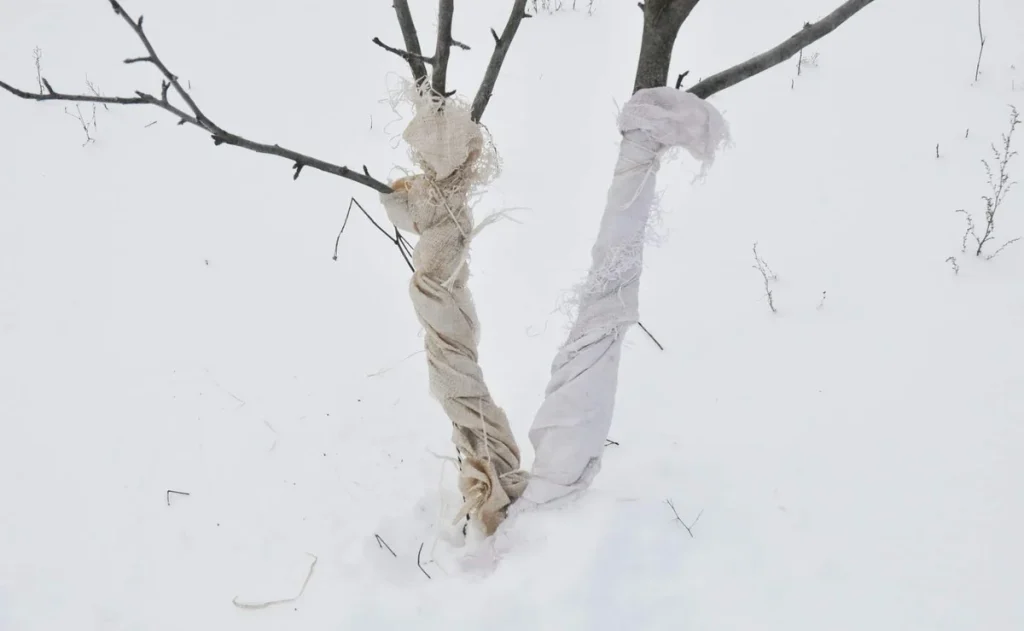

Proactive Pest Precautions
Unfortunately, trees are not completely safe from pests during winter. Deer remains a consistent issue throughout the winter months, frequently emerging to snack on both trees and shrubs. Tree wraps and deer netting can be an effective solution against damage from deer.
Deer netting allows the flowers and foliage to be seen while burlap covers fully mask the plants. Be sure to remember to remove any wraps and netting when spring returns. Trees and other plants that are left-wrapped may become a breeding ground for other pests and diseases.
Continue to inspect your plants for signs of pest infestations during the colder season, just as you would during any other month. Try to keep the areas around your trees and shrubs clear of debris and fallen leaves, which can be hiding spots for rodents and other pests.
If you are particularly worried about the health of your plants this winter, you may want to consider applying trunk bands. Trunk bands are sticky barriers that prevent crawling insects from reaching the crown of your plants. These are effective against caterpillars, ants, cankerworms, etc.
Next Steps
Caring for your plants and trees in winter requires a combination of proactive measures and a keen understanding of the challenges posed by cold weather. Follow this guide to ensure your garden emerges from winter healthy and ready to flourish coming spring.
Looking for more tips on seasonal landscaping and gardening? Contact us today! Learn more about Benson Enterprises and our seasonal services this winter!
Happy gardening!
Call Today For A Free Estimate (585) 248-0452
Latest Posts
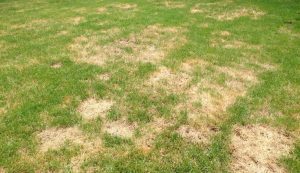

The Risks of a Heat Stressed Lawn and How to Treat It
The Risks of a Heat Stressed Lawn and How to Treat It With the summer


When to Trim Boxwoods for Healthy Growth
When to Trim Boxwoods for Healthy Growth When it comes to maintaining the landscaping on


7 of Our Favorite May Flowering Plants and Shrubs
7 of Our Favorite May Flowering Plants and Shrubs With spring in full swing and


A Spring Clean Up Guide for Your Landscape
A Spring Clean Up Guide for Your Landscape As the snow melts and the temperatures


The Benefits of Using Hardwood Mulch for Your Landscape
The Benefits of Using Hardwood Mulch for Your Landscape Mulch serves as a protective layer




